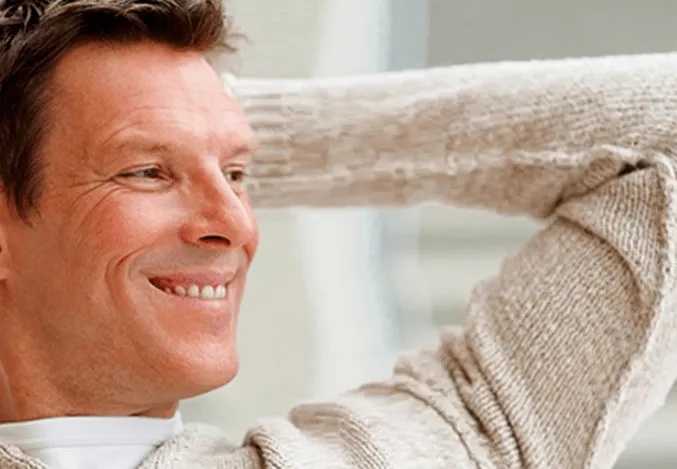Effective Hair Loss Treatments
Experiencing thinning hair or a receding hairline can feel daunting, but you’re not alone. At Click Pharmacy, we offer clinically proven, UK-licensed treatments for male pattern baldness and other hair loss conditions. From prescription tablets like Finasteride, which is also available under the brand name Propecia to topical solutions such as Minoxidil, you can start your hair restoration journey today — safely and discreetly.
Complete an online assessment to be reviewed by one of our UK-registered prescribers. If approved your hair loss treatment will be dispatched in discreet packaging by next day delivery.

Available Hair Loss Treatments
At Click Pharmacy, we offer clinically proven hair loss treatments like Finasteride tablets to reduce DHT, Minoxidil solutions to boost hair growth, and supportive shampoos to promote scalp health. Our UK prescribers will help you choose the right option based on your needs.
Understanding hair loss: why it happens
Hair loss, or alopecia, can occur due to genetics, stress, medical conditions, or lifestyle factors. The most common cause in men is male pattern baldness (androgenetic alopecia), triggered by sensitivity to the hormone dihydrotestosterone (DHT). Over time, DHT shrinks hair follicles, leading to thinner strands and eventual hair loss.
Common causes include:
-
Genetic predisposition
-
Hormonal changes
-
Stress (linked to conditions like telogen effluvium)
-
Nutritional deficiencies (iron, zinc, vitamin D)
-
Certain medications
Hair loss often begins with a receding hairline or thinning at the crown. Early treatment can slow progression and improve outcomes.
Hair loss affects millions of people in the UK. Learn more about causes, types of hair loss, and treatments on the official NHS Hair Loss Guide.
Symptoms and signs of hair loss
Recognising early signs can help you seek treatment sooner. Watch for:
-
Gradual thinning on top of the head
-
A receding hairline forming an “M” shape
-
Sudden loosening of hair, especially during brushing or washing
-
Patches of circular bald spots
If you notice rapid or unexpected hair loss, consult your GP to rule out underlying health conditions.
For detailed advice on alopecia and hair disorders, read the British Association of Dermatologists’ Hair Loss Leaflet.
How do treatments work?
Finasteride works by blocking the enzyme that converts testosterone into DHT — the main culprit behind male pattern hair loss. Lower DHT levels mean less follicle shrinkage, preserving hair density.
Minoxidil, on the other hand, helps by widening blood vessels in the scalp, improving circulation, and extending the hair’s growth cycle. This means thicker hair and reduced shedding.
Consistency is key: stopping treatment will typically result in hair loss resuming.
How long until I see results?
Hair regrowth is gradual. Expect:
-
3–6 months for noticeable improvement with Finasteride or Minoxidil.
-
6–12 months for optimal results.
-
Continued use is necessary to maintain gains.
Supporting hair growth: lifestyle tips
Enhance your treatment by:
-
Eating a balanced diet rich in protein, iron, and vitamins C and D.
-
Reducing stress with techniques like mindfulness or yoga.
-
Avoiding harsh hair treatments or heat styling.
-
Using gentle shampoos and conditioners.
When to see a GP
Consult your doctor before starting treatment if:
-
Hair loss is sudden or patchy.
-
You have a family history of autoimmune disorders.
-
You experience scalp inflammation, pain, or unusual symptoms.
Your GP can help diagnose the underlying cause and refer you if needed.
FAQs
How long do I need to take hair loss treatments?
As long as you wish to maintain results. Discontinuation leads to hair loss resuming.
Is hair loss treatment safe?
For most people, yes. Side effects like reduced libido or scalp irritation are uncommon but possible. Always discuss with your prescriber.
Can women use these treatments?
Minoxidil is approved for female pattern hair loss, but Finasteride should not be used by women.
Does stress cause hair loss?
Stress can contribute to shedding (telogen effluvium), but male pattern baldness is primarily genetic. Learn more about how stress and anxiety can affect hair in our detailed guide on hair loss due to stress and anxiety
Related Hair Loss advice & articles
- Male pattern hair loss: What is it and can it be treated?
- Difference between Propecia and Finasteride
- Types of hair loss
- What are the side effects of Propecia?
- Will my hair start to fall if I stop taking Finasteride?
- Side effects when taking Finasteride
- How effective is Finasteride for hair loss in men?
- Summer shedding: How to prevent hair loss in summer
- Hair loss due to stress and anxiety: What you should know
How to order
Order your Hair Loss medication in a few clicks. Ordering from us is easy, fast and discreet.
Free Online Assessment
Answer a few simple questions about your health.
Choose Your Medication
Our prescribers will review and guide you to the right treatment.
Fast Delivery
Once approved, your treatment is dispatched discreet packaging by next day delivery.
